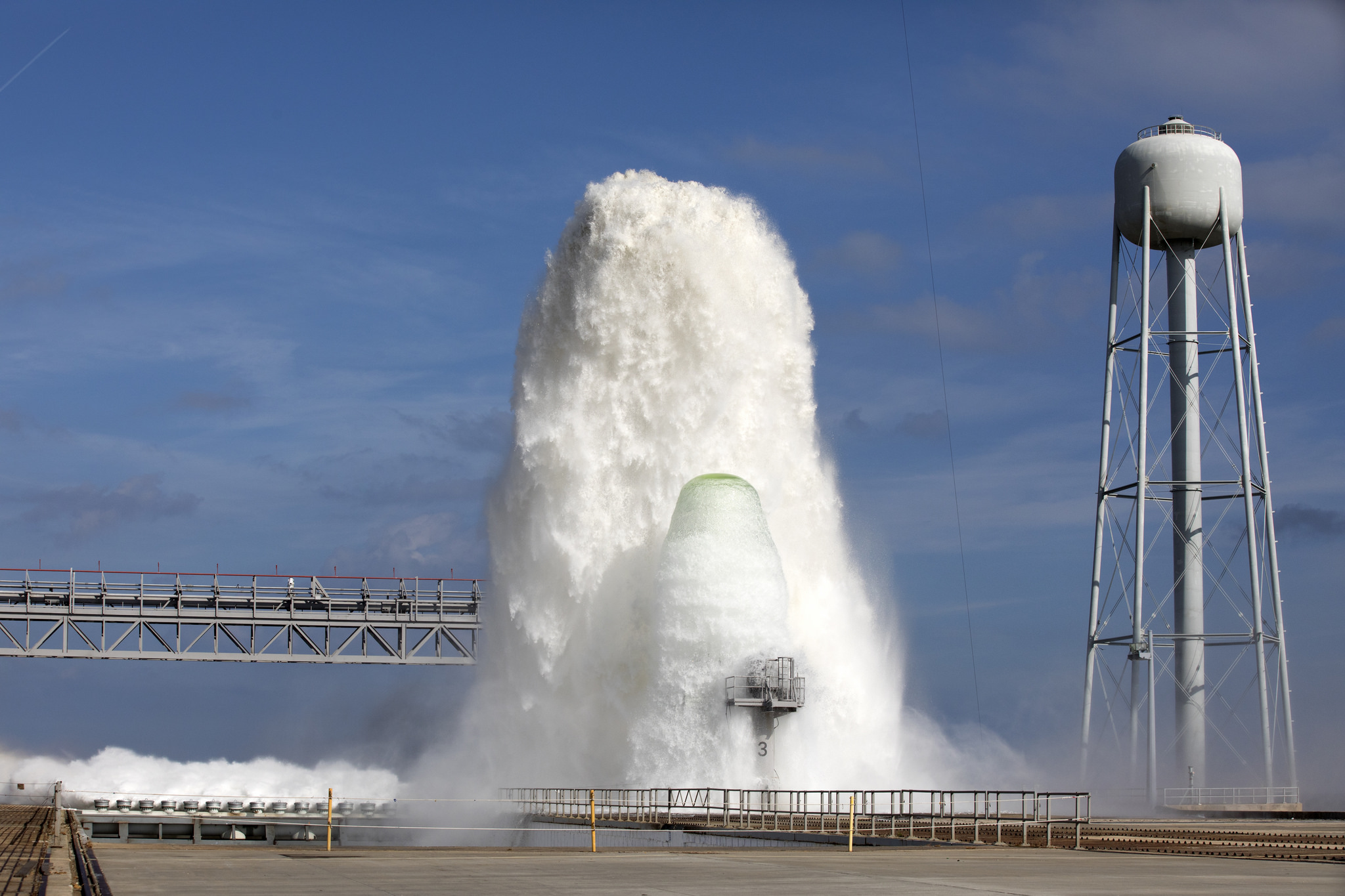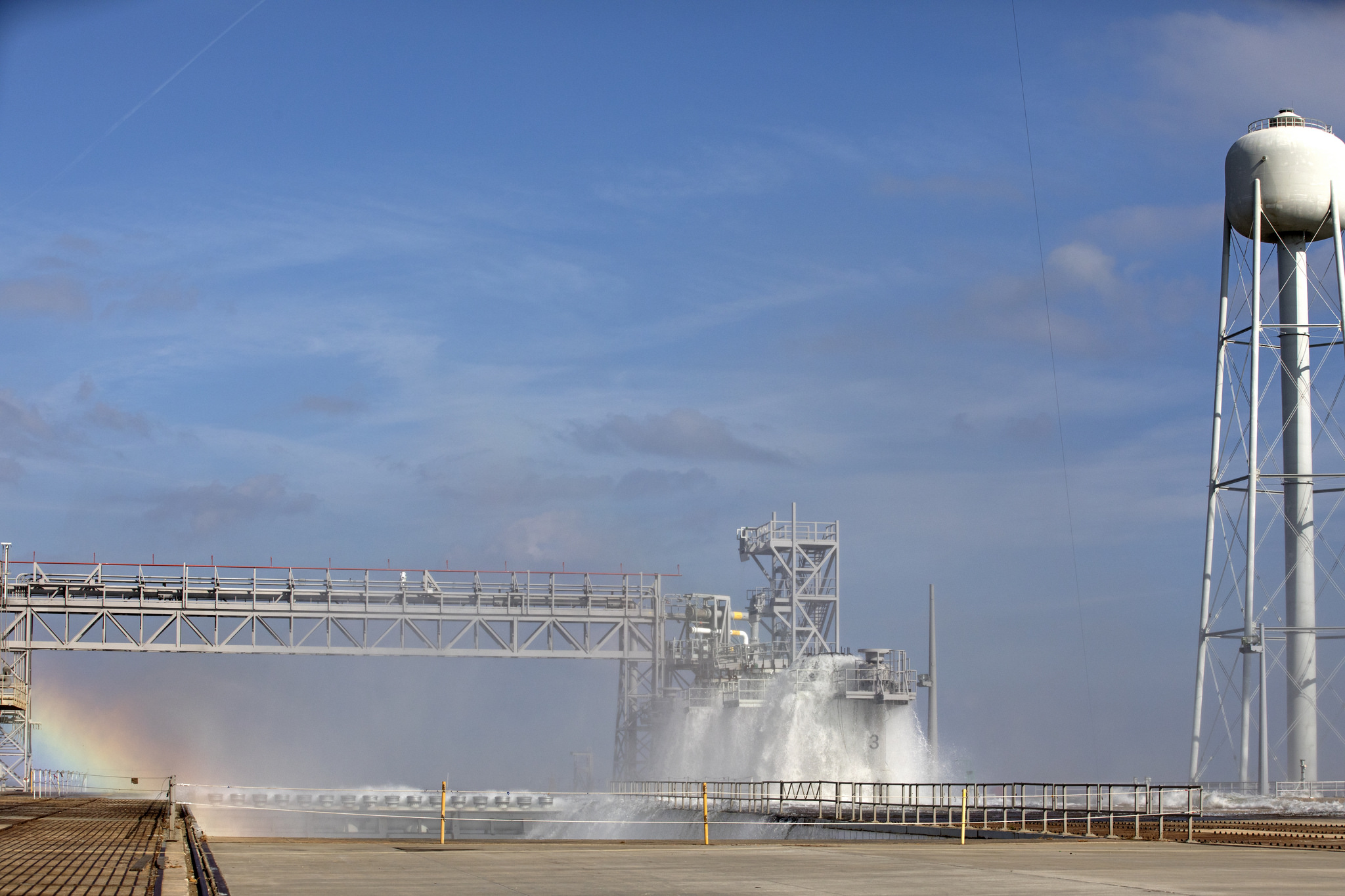By Linda Herridge
NASA’s John F. Kennedy Space Center
When NASA’s new Space Launch System (SLS) rocket lifts off, its four RS-25 engines and two solid rocket boosters will produce a combined 8.4 million pounds of thrust, and with that comes a torrent of heat and noise. To help protect the SLS rocket, Orion spacecraft, Mobile Launcher, and launch pad from the extreme acoustic and temperature environment, water will spray onto the launch pad during ignition and liftoff.
During a water deluge test in December, thousands of gallons of water flowed into the flame trench and through upgraded systems at NASA Kennedy Space Center’s Launch Pad 39B. Upgrades included corrosion control, refurbishment of the elevated water storage tank, and replacement of much of the piping, valves, nozzles, and other components.
The test was a milestone for Exploration Ground Systems to confirm and baseline the performance of the pad’s Ignition Overpressure and Sound Suppression (IOP/SS) systems, including new portions of the system that were upgraded after the Space Shuttle Program. The IOP/SS systems reduce the effects of acoustic energy and main engine ignition at liftoff, and reduces sound pressure levels experienced by the vehicle during ascent.
“Test of the upgraded and new portions of the system and a new controls system went very smoothly,” said Regina Spellman, pad senior project manager.
The test included a preliminary phase to flow about 150,000 gallons of water at high speed from a holding tank through all of the new and modified piping and valves at the flame trench, through the nozzles at the top of the flame deflector and mobile launcher interface pipes at the pad. On the second day, approximately 450,000 gallons of water flowed through the systems.
At peak flow, the water reached about 100 feet in the air above the pad surface – giving Old Faithful a run for its money.
“A geyser occurred because the mobile launcher was not present at the pad,” said Nick Moss, pad deputy project manager. “When the mobile launcher is sitting on its pad surface mount mechanisms, the rest of the IOP/SS system is connected to the pad supply headers and the water will flow through supply piping and exit through the nozzles.”
As the water subsided, it flowed into the flame trench and onto the east pad surface before finding its way to the east and west holding ponds through channels, called water flumes, or off the pad surface through the water drains and trenches. During an actual launch, some of the water will evaporate due to the heat.
“Additional water flow tests are scheduled to occur when the mobile launcher returns to the pad for integrated testing this summer,” Moss said.
NASA is hard at work building the Orion spacecraft, SLS rocket and the ground systems needed for a sustainable approach to challenging missions into the solar system. Orion’s first flight atop the SLS, Exploration Mission-1, will pave the way for future missions with astronauts and enable missions to the Moon, Mars, and beyond.




























